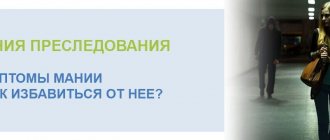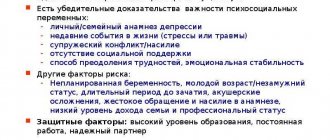0 2027 June 28, 2022 at 06:11 pm Author of the publication: Sofia Ulantikova
Loud sounds harm the psyche of any person. And if he is also particularly sensitive to them, constant background noise or sharp screams create stress. Stress changes mood, behavior and perception.
Let's figure out what happens in the head of a sound-sensitive person in a bad sound atmosphere. If such a person understands how and why noise affects him, he will be able to protect himself from noise, not by avoiding the external problem, but by eliminating the internal one.
Symptoms of noise hypersensitivity
With neurosis, increased sensitivity to loud sounds manifests itself in different ways. Typical symptoms:
- irritation;
- shiver;
- headache;
- dizziness;
- lightheadedness;
- semi-fainting states.
The trembling can be fleeting - it shudders and goes away. But it can be long and exhausting.
Lightheadedness is often accompanied by nausea. And sometimes vomiting.
Other ailments are possible that reflect a person’s individual “preferences” and fears. Some people feel sick to their stomachs, while others feel their temperature rise.
The intensity of the symptom depends on the severity of the anxiety.
The same individual has different symptoms at different periods of life and in different circumstances. Sometimes a person does not even notice really loud sounds. At other times, the “noise” from the flapping of a butterfly’s wing leads to a panic attack.
Hypersensitivity to sounds is normal with anxiety. But it frightens and causes panic.
Mechanism of occurrence
The human body is equipped with powerful compensatory systems. When the outer, middle and inner ear are damaged, the amount of information that enters the brain is significantly reduced.
The auditory system is forced to compensate for this disorder by strengthening other auditory areas.
Loud noise intolerance occurs when the balance between amplification and inhibition mechanisms in the auditory areas is disturbed. In this case, all processes are reconfigured and the excitation threshold is reduced.
As a consequence of this, sound signals that are normally perceived in a normal state cause severe discomfort and pain.
In such conditions it is very difficult to lead a normal life. A person with such a disorder has to limit communication with others and give up many professions.
Panic trigger sounds
Any noise becomes a trigger for anxiety and panic.
Patients with post-traumatic stress disorder respond to sounds that are reminiscent of the trauma they experienced.
Sometimes an injury is a serious event associated with a real danger to life. And sometimes it’s a harmless incident that a person takes seriously.
When the first panic arose, a dog was barking somewhere. And now dog barking is a panic attack trigger.
People with generalized anxiety have heightened sensitivity to all sounds. The stronger the anxiety, the weaker the noise that leads to the attack.
Any sound provokes panic. It is not the noise itself that is important, but the attention that is paid to it.
Diagnostics
If labyrinth diseases are suspected, diagnostic measures are carried out by an otolaryngologist and vestibulologist. Patients with neuritis, meningitis and other neurological pathologies are examined by a neurologist. For mental disorders, consultation with a psychiatrist or psychotherapist is indicated. During the survey, the time of onset of hyperacusis, its connection with external factors, and other symptoms are determined.
In case of migraine, establishing the nature of cephalgia is of great importance. When collecting anamnesis, the presence of chronic otitis media, head injury, and diseases accompanied by increased intracranial pressure is clarified. When diagnosing acoustic injuries, a life history reveals episodic or constant exposure to high noise conditions. To clarify the diagnosis, procedures such as:
- Otoscopy and microotoscopy.
Changes are not typical for Meniere's disease. Acute acoustic injuries are accompanied by rupture, chronic ones – by retraction of the eardrum. With perilymphatic fistulas, swelling and hyperemia of the membrane are noted, and the light reflex is weakened. With otosclerosis, Hombgren's triad is determined, a local decrease in skin sensitivity, and sometimes atrophy or hypertrophy of the membrane. - Neurological examination.
In post-concussion trauma, there are no neurological disorders, but there is autonomic dysfunction. With neuritis, muscle weakness and sensitivity disturbances in half of the face are detected. With meningitis, meningeal symptoms are detected, with migraine stroke and multiple sclerosis - a characteristic neurological deficit. - Research of the auditory analyzer.
Recommended for pathologies of the labyrinth and acoustic injuries. The list of techniques may include tuning fork testing, speech and tone threshold audiometry, otoacoustic emission, electrocochleography, and acoustic impedance measurement. The scope of the examination is determined depending on the nature of the violation. - Research of the vestibular apparatus.
Necessary when the labyrinth is involved. Vestibulometry, computer stabilography, and indirect otolitometry are prescribed. Hypo- or hyperreflexia may be characteristic of various diseases. In Meniere's disease, these conditions replace each other depending on the time of examination (paroxysm or interictal period). - Other hardware techniques.
As part of the examination, X-rays of the temporal bone, CT and MRI of the brain may be performed. A number of patients are shown electroencephalography and echoencephalography, extra- and transcranial Dopplerography, and duplex scanning. For neurological pathologies, electromyography, electroneurography, and evoked potential testing are prescribed. - Spinal tap.
It is the main method for diagnosing meningitis and allows one to verify or refute this diagnosis. The liquid flows out under pressure, in serous processes it is transparent, in purulent processes it is cloudy. Based on the results of the analysis, pleocytosis, an increase in protein levels, and sometimes a decrease in the amount of glucose are determined. - Lab tests.
In case of ganglionitis of the geniculate ganglion, the herpes zoster virus is detected by ELISA or PCR, and an immunogram is prescribed to identify possible secondary immunodeficiency. In amaurotic idiocy, a sharp decrease in the level of hescominidase A is detected in a biochemical blood test; microscopy of neurons reveals signs of cell degeneration.
In the diagnosis of migraine, a decisive role is played by the characteristic clinical picture and the absence of changes according to additional studies. Patients with post-concussion syndrome, PTSD and depression are advised to undergo psychological testing to assess personality characteristics, emotional-volitional and cognitive spheres, and identify characteristic signs of mental disorders.
Otoscopy
Causes of noise intolerance
Normal reaction to stress
When the body is anxious, it prepares for “fight and flight.” In order to fight angrier and run away more quickly, it spurs the senses. This is how evolution intended it. Because in the wild, the one who survives is the one who first noticed the predator and took off running.
Today we are more likely to sit in an easy chair at the computer than to run through the jungle from predators. And therefore our fears are fictitious. But the preparation for the fight is real. When we are anxious, the activity of our senses goes through the roof. And we are exhausted by the “bright” light of the sun from behind the clouds or the “loud” cooing of a dove.
Often we don't notice the anxiety. There are no predators around us - there is nothing to be afraid of. And we are tenderly attached to anxious thoughts. But the brain is alarmed because it does not distinguish between real and imaginary danger. He is worried and preparing for "fight and flight."
In our safe world, we rarely realize that we are afraid. Therefore, we attribute manifestations of fear to the symptoms of a “terrible disease” that activated the senses.
Neurasthenia
Chronic fatigue (neurasthenia) has several causes. This -
- increased loads;
- suppressed emotions;
- fear of an important decision.
Neurasthenia can cripple a person with a stable psyche. And neurotic sufferers, patients with “VSD” are cut off like a sickle cuts off a straw. Such people live in constant hassle. They are always waiting for an attack. Sometimes external. But more often internal - heart attack, stroke, fainting. Living on nerves is difficult. This is where neurasthenia arises.
Academician Pavlov divided neurasthenia into several phases. In the first two, people react sharply to standard stimuli, including sounds. And it is not the sound itself that is important, but the interruption of silence.
Chronic stress and fatigue lead to neurasthenia, in which we overreact to any stimuli.
Conditioned reflex
Ivan Petrovich Pavlova rang the dog's bell.
Then he gave us food. And so the animal developed a salivation reflex to the sound of a bell. We know Pavlov's experiments from school. But we don’t apply knowledge to ourselves. We are looking for complex explanations of simple phenomena. But often an acute reaction to undefined sounds is a common conditioned reflex, exactly the same as Pavlov’s dog had.
- The man heard a sound. I got scared. And he developed a conditioned reflex of being afraid of this sound.
- Then the primitive animal reflex was overgrown with a bunch of human explanations and fears. As a result, it has become stronger and more varied: unpleasant sensations now arise in response to different sounds, and not just to the one that formed the reflex.
Sound intolerance is a bad habit. We train ourselves to overreact to ordinary stimuli. And then we suffer from the developed reflex.
Obsessiveness and avoidance
Any symptom of neurosis is reinforced by fixation of attention on it (obsession).
The more often we think that we are going to be sick, the more sick we become. The more persistently we convince ourselves that we cannot stand sounds or smells, the more strongly we react to them.
Chairman of the Association of Cognitive-Behavioral Psychotherapy D.V. Kovpak says:
Start thinking about your little finger, and after five minuses you will feel it. He'll be sick in an hour. And after 10 hours it will hurt excruciatingly.
Avoidance works the same way. The more often and faster we run away from what frightens us, the more it frightens us.
The more attention and respect we treat the manifestations of neurosis, the more effectively it subjugates us to its will.
How to deal with misophonia?
- First of all, treatment of misophonia requires seeing a doctor. Although there is currently no specialized specialist who would prescribe comprehensive treatment, the attending physician will help you understand your condition.
- There is a good chance that you will have to see a psychiatrist, psychologist and audiologist.
Get into behavioral therapy. There are several methods to help get rid of misophonia:
- Cognitive behavioral therapy. With its help you can learn to control attacks of aggression. This will help you improve communication in society.
- Tinnitus retraining. During this therapy, the doctor will teach you to perceive irritating sounds as neutral. It will be easier for you to hide your symptoms, and over time they will disappear altogether.
Treatment of intolerance to loud sounds
We are looking for the main cause of discomfort
First, we identify the main cause of hypersensitivity to sounds.
- If it is neurasthenia, we treat it. This is a separate task that is solved after a long rest.
- If a conditioned reflex has formed after a stressful event, we carry out exposure therapy.
- If intolerance is an anxious-phobic reaction to normal physiological reactions of the body, we fight neurosis and do exposure therapy exercises.
What is the essence of noise exposure treatment?
The goal of the method is to break the conditioned reflex to any frightening stimulus. In our case, to noise. To remove the pathological ligament, it is necessary to eliminate the reinforcement.
The bell rings, but the dog is not given food. If supply interruptions continue, the conditioned reflex to the bell will fade away: saliva will no longer be released in response to the sound of the bell.
With hypersensitivity to noise, reinforcement of the reflex is:
- fright at the sound;
- avoiding “noise attack”.
In exposure therapy, a person is confronted with a frightening stimulus. And it survives this collision.
Since it is difficult to immediately withstand something that frightens you, the intensity of the stimulus and its duration are increased gradually. This is called graded desensitization.
In order for adaptation to develop gradually, not only the intensity and time of the signal, but the conditions of its occurrence are regulated. The initial encounter with “terrible” noise is carried out in conditions that the patient assesses as safe for himself, for example, he is at home with loved ones.
Gradually they move on to real – “combat” – conditions. To do this, they go outside, move away from home, and listen to a frightening sound in the environment in which it frightens the most.
Exposure therapy is the gradual habituation of a person to a frightening stimulus. Carry out according to the scheme from simple to complex.
How to carry out stepwise desensitization at home
Stage one: imaginary exposure
In an environment that you judge to be safe, find a comfortable position. Relax. To relax, use:
- muscle relaxation techniques;
- breathing exercises;
- meditation.
The method doesn't matter. The main thing is to achieve relaxation.
When you are relaxed, think about the frightening sound and your pathological reaction to it. Do this in all its glory: imagine in detail what could happen to you - panic, heart attack, dizziness.
Draw your fears vividly.
Important!
If you bring yourself to panic, good. Just get over it. You are safe. You are not in danger. There is not even a frightening sound, it exists only in your head. When panic occurs, don't stop thinking about the sound. On the contrary, stay with him until the panic subsides.
Repeat the exercise every day until fantasies about encountering a hated sound no longer frighten you.
Stage two: real experiences in a safe environment
- Write down the noise that scares you.
- In a safe environment, find a comfortable position and relax. Record a scary sound.
- Gradually increase your listening time and volume.
It’s good if you feel panicked during the exercise. Don't turn off the sound. Survive the attack to his accompaniment.
Repeat until you no longer notice the recorded sound.
Stage Three: Facing “Danger”
Gradually progress to encountering unpleasant sounds in everyday life outside the “safe” zone. First, not far from home, so that you can retreat to a shelter. Then - in a more realistic environment.
You should end your training when you stop noticing the sound, no matter where it appears and no matter how loud it is.
“Not noticing” does not mean “not hearing.” It is important not to react emotionally, not to get scared.
Focus on what's important
People who are sensitive to sounds may become lost in their own thoughts. They are often gnawed by global questions to which it is impossible to find a clear answer. They involuntarily think about the essence of human existence and do not understand what this essence is. These people spend their intellectual energy thinking about their internal problems. And their problems seem more and more difficult and unbearable to them.
They are trying to formulate the meaning of their personal existence. But such reflections baffle them. Sometimes they themselves understand that their thoughts are unproductive. But what else is there to think about? Many of those who are sensitive to sounds do not find use for their abilities. They do not realize their psychological need to comprehend the meaning of existence, to make discoveries, even at the level of their personal, individual life. Then they, already lost, are drawn into the negative by the slightest sharp sound and noise slightly above average.
There is a way to counteract the psychological harm of annoying sounds. If a sound-sensitive person receives a dose of discovery and deep meaning, noise does not harm him. He can safely ride in crowded transport and not plug his ears with headphones. To receive such a dose of psychological fulfillment, you need to be able to concentrate your consciousness and find an application for your intellectual abilities.
It's easier to concentrate on what you like to think about. You enjoy both the object to which you direct the focus of attention and the very process of the work of consciousness. That is, in order to distract yourself from sounds, you need to choose an interesting intellectual subject, become truly interested, and immerse yourself in the problem. When you come to conclusions and feel that an idea is about to open, no sounds can break your concentration.
But how can you load your brain from scratch, out of habit, when it’s so labor-intensive?
Therapy for hypersensitivity to sounds: briefly step by step
- We understand why we react sharply to sounds. We no longer frighten ourselves with terrible diseases and unknown explanations.
- We identify the main cause of hypersensitivity to noise. If this is a phobia and/or a consequence of mental trauma, we move on to exposure therapy.
- We play a frightening sound in our imagination and learn not to be afraid of it.
- We train ourselves to withstand noise in a safe environment at home.
- We get used to “scary” sounds in the real world.
Click on the star to rate the post!
Average rating 4.8 / 5.8
Stages of the disease
There are three stages in the course of neurasthenia:
- Increased irritability. Quite ordinary things cause strong irritation: conversation, minor noise, awkwardness, minor failures. For trivial reasons, the patient loses self-control and becomes enraged. Has difficulty falling asleep, sleeps poorly, wakes up sleep-deprived, and feels tired throughout the day.
- Increasing symptoms. Even rest does not help the symptoms disappear or at least reduce them. The patient is constantly tired, any work involves significant effort. Attacks of impotence and tearfulness appear.
- A stage of severe nervous disorder characterized by complete disability. The patient is apathetic, lethargic, drowsy, depressed, and shows no interest in what previously occupied him.
Sources
- Chutko L. S., Baranova I. A. Neurasthenia. 2009. Medical Council;
- Veltishchev Dmitry Yuryevich Neurasthenia: history and modernity. 2011. Neurology, neuropsychiatry, psychosomatics;
- Bozhko S. A., Beketov Yu. A. Complex non-drug therapy of neurasthenia. 2011. Bulletin of new medical technologies. Electronic edition;
- Chutko Leonid Semenovich, Surushkina S. Yu., Nikishena I. S., Yakovenko E. A., Anisimova T. I. Neurasthenia: state of the problem and approaches to therapy. 2013. Neurology, neuropsychiatry, psychosomatics;
- N.I. Tursynov, M.A. Grigolashvili, S. Khan, E.D. Kim, S.W. Sopbekova, etc. Modern approaches to the treatment of neuroses in adults and children. 2016. Journal “Neurosurgery and Neurology of Kazakhstan”;
- Ivanova Irina Anatolyevna, Kuimova Natalya Nikolaevna, Kornienko Nadezhda Alekseevna, Tarasyuk Alexandra Aleksandrovna Complex Non-drug therapy of neurasthenia. 2022. Yaroslavl Pedagogical Bulletin.
Features of the course of neurasthenia in women
There is a widespread belief in society that neurasthenia occurs much more often in women than in men. These data are not confirmed either statistically or clinically. Both sexes suffer equally from asthenic neurosis, however, due to cultural characteristics, women are more inclined to demonstrate symptoms, while men are instructed to be restrained in their expressions of emotions. A peculiarity of the course of neurasthenia in women is its more obvious nature, which helps in the timely detection and treatment of the disease. In men, neurasthenia is more often diagnosed at later stages, which is accordingly more severe, this is due to the fact that men tend to neglect this condition and seek medical help late.
Neurasthenia in women is more pronounced and mild, in men it is hidden and severe, but this is not explained by physiological reasons, but by the difference in socially acceptable behavior of men and women.








